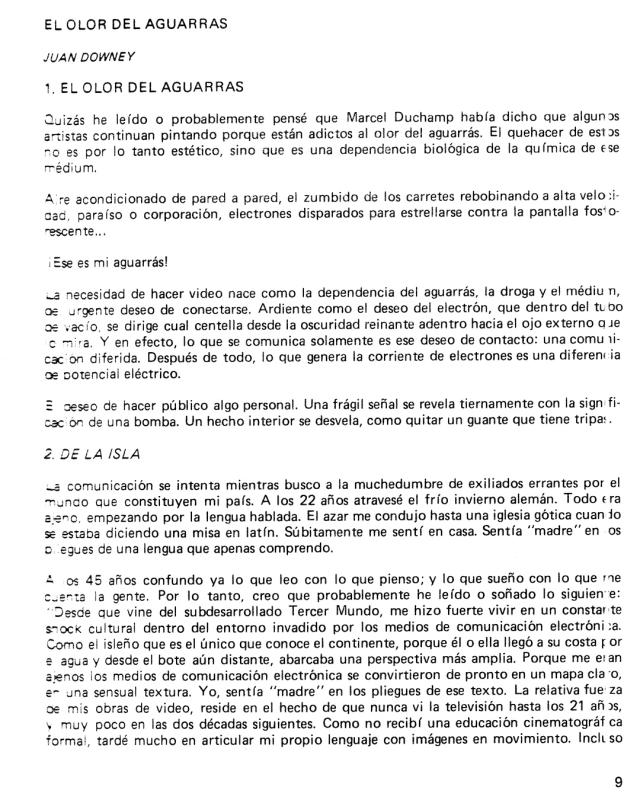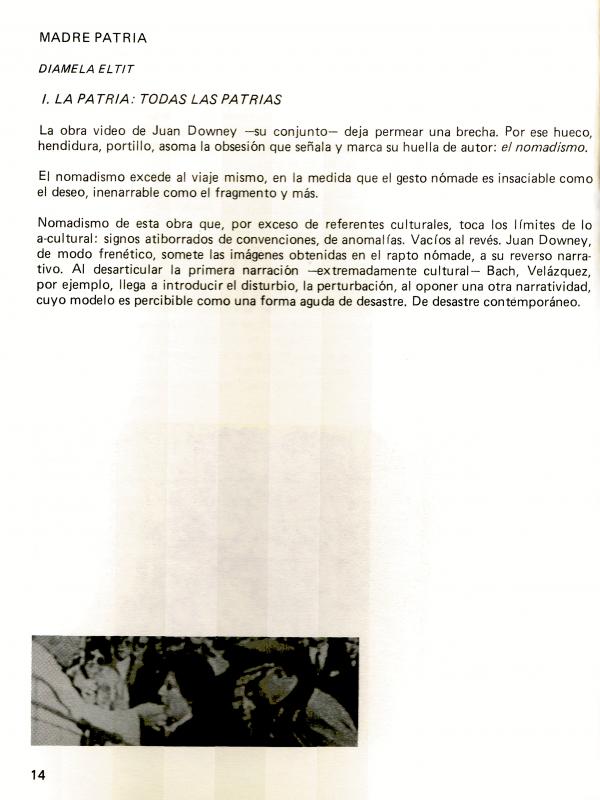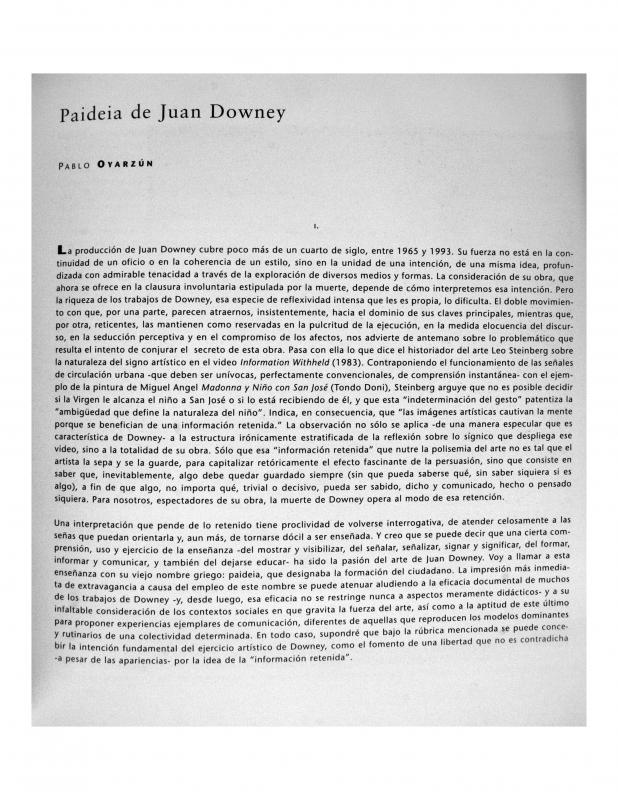The artist Juan Downey (1940–1993) wrote the essay “Noreshi Towai” for Festival Downey: Video porque Te Ve, his exhibition at the Galería Visuala (Santiago, 1987). The exhibition catalogue includes essays by the writer Diamela Eltit (b. 1949), the art critic Justo Pastor Mellado (b. 1949), the American curator Anne Hoy, the intellectual Patricio Marchant (1939–1990), anthropologists Pedro Mege (Chilean) and the American Eric Michaels (1948–1988), the Chilean video artist Néstor Olhagaray (1946–2020), the researcher José Pérez de Arce (b. 1950), and the Chilean archeologist who lived in the United States, Constantino Torres. These many different perspectives reflect the complexity of an art movement that thought deeply about its milieu, possible exhibitions, and the complexities of culture, life in society, politics, and history. [See other catalogue essays in the ICAA Digital Archive: “El misterio de la Gran Pirámide” (doc. no. 735702) by Mellado; “Juan Downey y el video espejo” (doc. no. 735687">735687) by Pérez de Arce; “Video arte y autobiografía” (doc. no. 735821) by Marchant; “El olor del aguarrás” (doc. no. 735687">735687) by Downey; “A propósito de “Yanomami (1977)” (doc. no. 735727) by Olhagaray; and “Cómo vernos viendo a los Yanomami, viéndonos” (doc. no. 735781) by Michaels].
Juan Downey was a pioneer of video art, though he also worked in other fields, including drawing, printmaking, and painting. As a self-taught artist, Downey’s career revolved around medial explorations that resulted in an unprecedented body of work. After graduating, at age twenty-two, with a degree in architecture he left Chile and went to Germany, studied painting in Spain, and became interested in printmaking in France. Eventually, in the mid-1960s he settled in the United States, but continued to travel to different countries because experiencing other cultures was an integral part of his poetics. For example, his series Video Trans Americas (1973–76), one of his most widely-known works that he refers to, in the revised version of the text “El viaje,” as a process of self-discovery, like the technological explorations that are a constant in his oeuvre. He had a complex system for showing his videos, with monitors and other objects that were part of the audiovisual production. We can see this in the photographs of Rewe (1971), an installation of TV sets stacked up in a column that, as suggested by the title, is a nod to the Mapuche rewe, a ceremonial piece through which a spiritual authority connects to the energies emanating from their ancestors and nature. The multiple videos are shown at the same time beneath a large TV with text scrolling across the screen criticizing conditions in South America under North American control.
Downey’s status as a foreigner influenced his work, but Chile was one of his obsessions, as shown by his videos which were constantly paying homage to his homeland, as mentioned by the writer Diamela Eltit (b. 1949) in her essay “Madre Patria” (doc. no. 735694). He had a couple of solo shows before leaving Chile in 1961, and did not have another exhibition there until the mid-1980s. In 1984 he showed 20 años de dibujos, grabados y videos at the Galería Plástica 3, and in 1987, Festival Downey: Video porque Te Ve at the Galería Visuala. His work has been discussed by several writers who note his interest in ecology, extractivism, mass culture, and multiculturalism. [To see reviews of Downey’s work written for a posthumous retrospective in Chile see: “Viaje hacia la totalidad” (doc. no. 739212) by Carlos Aldunate; “Juan Downey: el dibujo como paradoja” (doc. no. 739194) by Mary Sabbatino; “Paideia de Juan Downey” (doc. no. 739185) by Pablo Oyarzún; and “Reelaborando la modernidad de Juan Downey en The thinking eye” (doc. no. 739203) by John Hanhardt].







